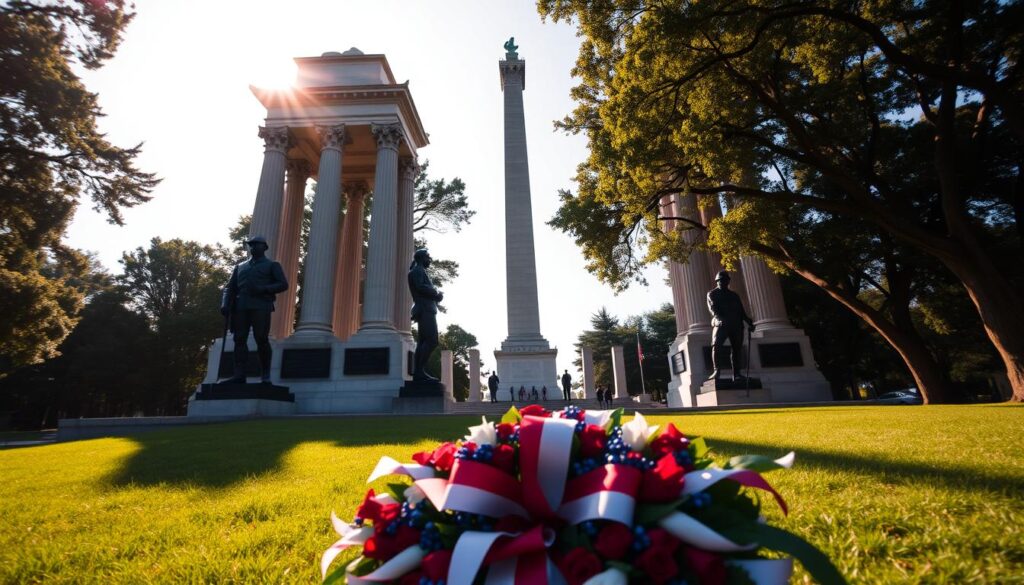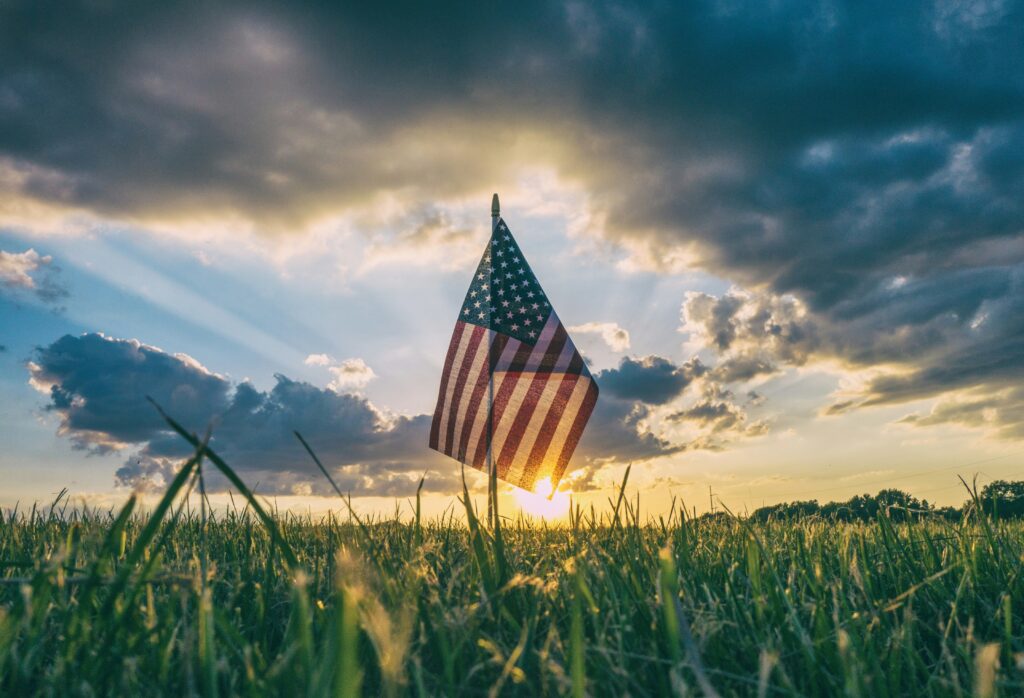Every year, the last Monday in May holds deep significance across the United States. This federal holiday serves as a solemn tribute to military personnel who made the ultimate sacrifice. While many associate it with barbecues and sales, its core purpose remains remembrance.
Organizations like Wounded Warrior Project (WWP) reinforce this message. Their powerful philosophy—“The greatest casualty is being forgotten”—reminds us to honor heroes beyond just one day. Families, communities, and the nation unite to reflect on service and sacrifice.
Looking ahead, Memorial Day will fall on May 26, 2025; May 25, 2026; May 31, 2027; and May 29, 2028. These dates offer opportunities to plan meaningful observances. For those seeking resources, 365 Holiday Videos provides tools to commemorate the occasion respectfully.
Key Takeaways
- A federal holiday dedicated to fallen U.S. military members
- Focuses on remembrance, not commercial activities
- Wounded Warrior Project emphasizes never forgetting sacrifices
- Upcoming dates: 2025-2028 for planning purposes
- Resources available for respectful celebrations
What Is Memorial Day? Honoring Fallen Heroes
Flags fly at half-staff as the nation pauses to remember its heroes. Established in 1868 but federally recognized in 1971, this day transcends barbecues and sales. It’s a sacred promise to never forget the cost of freedom.
The Significance of Late May
The last Monday of May was chosen for practical and symbolic reasons. Flowers bloom nationwide, perfect for decorating graves. As Army veteran Edwin Martinez reflects, “Their sacrifice is the greatest gift—one we repay with remembrance.”
Memorial Day vs. Veterans Day
While both honor military service, key differences exist:
- Memorial Day: Solemn tribute to fallen soldiers who died in service.
- Veterans Day: Celebrates all living and deceased service members.
“Our debt to them is one we can never fully repay,”
Harry S. Truman, 1945
At 3 PM local time, the National Moment of Remembrance unites the country in silence. Instead of saying “Happy Memorial Day,” consider phrases like “We honor their sacrifice.”
The History of Memorial Day: From Decoration Day to National Holiday
Rooted in the aftermath of America’s bloodiest conflict, this tradition began as a heartfelt tribute. After the Civil War, communities North and South decorated graves with flowers, creating a patchwork of local observances. These early rituals laid the foundation for a national day of remembrance.

Civil War Origins and the First Tributes
In 1865, freed slaves in Charleston, South Carolina, held the earliest known ceremony. They honored Union soldiers at Washington Race Course, transforming a burial ground into a sacred space. Meanwhile, towns like Boalsburg, Pennsylvania, and Columbus, Mississippi, held their own decoration days by 1866.
General Logan’s 1868 Proclamation
Major General John Logan cemented the tradition. His Decoration Day order urged citizens to adorn graves with “the choicest flowers of springtime.” The first national observance at Arlington National Cemetery drew 5,000 participants, symbolizing unity amid Reconstruction.
How Waterloo, NY, Became the Official Birthplace
While many cities claimed the title, Waterloo’s 1866 community-wide closure for grave decorations stood out. A century later, the federal government declared it the holiday’s birthplace. This recognition honored the town’s role in shaping a national tradition.
“Let no vandalism of avarice or neglect, no ravages of time testify to the present or to the coming generations that we have forgotten…”
General John A. Logan, 1868
From local events to a federal holiday, this day’s evolution reflects our enduring promise to remember. Each floral tribute and moment of silence echoes those early acts of reverence.
How Memorial Day Became a Federal Holiday
Political movements and legislative changes shaped this solemn observance. What began as Decoration Day evolved into a federal holiday through tireless advocacy. Veterans’ groups and lawmakers worked to ensure nationwide recognition.
The Role of the Grand Army of the Republic
The Grand Army of the Republic (GAR), a Union veterans’ organization, became a political force. With over 400,000 members, they pushed states to adopt May 30 as Decoration Day. By 1890, most northern states recognized the date.
After World War I, the holiday expanded to honor all war casualties. The GAR’s efforts laid the groundwork for federal action. Their motto—“Not for themselves, but for their country”—echoed in later campaigns.
The Uniform Monday Holiday Act of 1971
In 1968, Congress passed legislation to create consistent three-day weekends. The Act moved the observance to the last Monday in May. While some opposed breaking from May 30, the change aimed to boost participation.
The Vietnam War era intensified patriotism, accelerating the holiday’s federalization. In 2000, the National Moment of Remembrance Act added a 3 PM silence, deepening its significance.
| Aspect | Pre-1971 | Post-1971 |
|---|---|---|
| Date | Fixed: May 30 | Last Monday in May |
| Scope | Civil War focus | All war casualties |
| Government Role | State-led | Federal holiday |
Today, the day observed balances tradition with modern life. Parades and ceremonies continue, ensuring heroes are never forgotten.
Modern Memorial Day Traditions and Observances
Modern observances honor fallen heroes through traditions both old and new. Communities blend solemn rituals with patriotic displays, creating meaningful connections across generations. These practices ensure sacrifices are never forgotten while adapting to contemporary life.

Parades, Ceremonies, and the National Moment of Remembrance
New York City’s Fifth Avenue hosts one of the nation’s oldest parades, running continuously since 1867. Smaller towns organize processions featuring veterans’ groups, marching bands, and floats adorned with flowers. These events often conclude at local cemeteries for wreath-laying ceremonies.
At precisely 3 PM local time, the national moment of remembrance pauses the country. This shared silence, established in 2000, creates unity amid diverse celebrations. As National Guard veteran Bill Hansen notes, “That minute reminds us what the weekend truly represents.”
Decorating Graves: Flowers, Flags, and the “Murph” Workout
Decorating graves remains a cornerstone of observance. Volunteers place small flags at military headstones, while families arrange red poppies—a symbol tracing back to World War I. Some leave inverted flag bouquets, representing a call that will never be answered.
Fitness communities honor Lt. Michael P. Murphy through the grueling “Murph” workout. This CrossFit tradition of pull-ups, push-ups, and squats mirrors the Navy SEAL’s final heroic actions. “Pain reminds us of their sacrifice,” explains Marine veteran and gym owner Carlos Mendez.
Barbecues and the Unofficial Start of Summer
While $1.5 billion in grill sales mark the weekend, many balance celebration with reflection. Families often visit cemeteries before gatherings, blending remembrance with reunion. The PBS National Memorial Day Concert offers an alternative for those seeking solemnity.
Regional variations abound—from Indianapolis 500’s pre-race tribute to small-town picnics. Whatever the tradition, the essence remains: honoring those who gave everything for our freedom.
Why Memorial Day Matters: A Nation’s Gratitude
Behind every folded flag lies a story of courage that defines our nation’s character. This day of remembrance transforms statistics into sacred memories, connecting us to 1.3 million lives lost since 1775. Through veterans’ voices and Gold Star families, we grasp freedom’s true cost.
Reflections from Veterans and Military Families
A Wounded Warrior Project survey reveals 68% of veterans believe the public misunderstands this day’s purpose. Marine Corps veteran David Daly, who lost three comrades in Iraq, shares: “We don’t want pity—just recognition that their service mattered.”
Gold Star mother Linda Jeffries describes Memorial Day as “365 days a year” for bereaved families. The VA’s Veterans Legacy Memorial program helps by digitizing hero profiles, allowing nationwide tributes. These stories bridge the gap between battlefields and backyard barbecues.
The Legacy of Sacrifice for Freedom
From World War I trenches to Afghan mountains, each conflict adds layers to our remembrance. Recent wars reshaped perceptions—23% more Americans now attend ceremonies compared to 2001. Schools in all 50 states teach the “Freedom Isn’t Free” ethos through programs like:
- Virtual cemetery tours showcasing United States military history
- Living history days with veteran speakers
- “Adopt-a-Grave” initiatives for local heroes
As sunset ceremonies conclude this solemn day, we reaffirm a promise: to honor not just the fallen, but the ideals they defended. Their legacy lives when we pause, reflect, and pass their stories forward.
Conclusion: Keeping the Spirit of Memorial Day Alive
True remembrance requires active participation, not passive observance. The Wounded Warrior Project empowers 200,000+ veterans annually—proof that honoring sacrifices demands year-round action. Visit national cemeteries, research local heroes, or share military stories across generations.
Balance celebrations with reflection. Pause at 3 PM for the National Moment of Remembrance, or volunteer with organizations supporting Gold Star families. These acts transform the holiday into a living tribute.
Need help creating tributes? Contact 365 Holiday Videos at info@365holidayvideos.com. Together, we ensure Memorial Day remains a beacon of gratitude, not just a calendar date.




